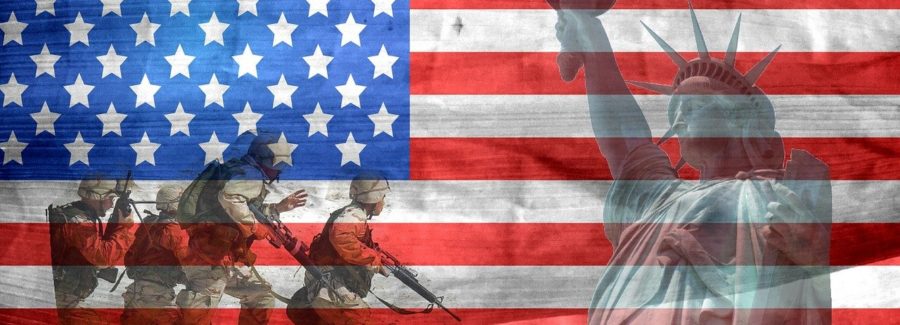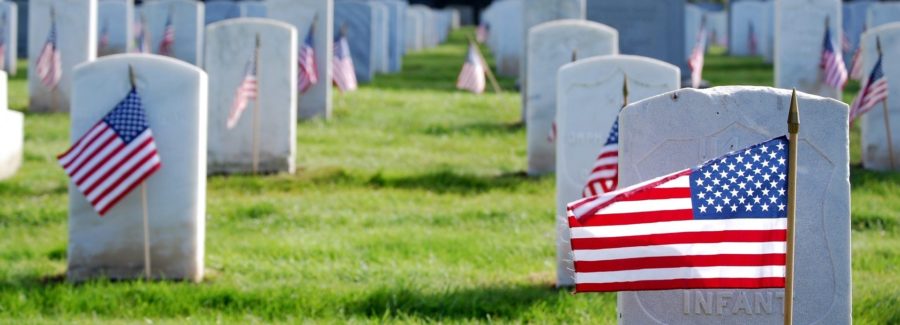8:00 - 17:00
Opening Hour: Mon - Fri
>> View the UPDATED results of this study
Holidays mean time with family, time to unwind, and time spent doing the things you enjoy most.
Sadly, predictions are showing that a good portion of that precious time we so long for will be spent stuck in the car.
According to NHTSA, “The number of vehicle miles traveled on U.S. roads in 2016 increased by 2.2 percent.”
More people on the road = more traffic.
And during the holidays, the roads are even more congested. With each passing holiday, we are seeing more and more traffic.
Each year holiday road travel has increased by roughly three percent in the United States.
2018’s Independence Day and the days surrounded it are expected to cause trips by car to take twice as long especially in our nation’s busiest cities.
More traffic = more people in fatal crashes.
That 2.2 percent increase in travel we mentioned above caused a 2.6 percent increase in people killed on American roads.
Table of Contents
Drivers in the U.S. need to brace themselves for drastic increases in traffic and deadly crashes during the holidays.
Read on to discover which five holidays have claimed the most lives. Click here for our methodology.

Fatal Crash Average: 105.75
Fatal Crash Total: 423
The break in hostilities during World War I that happened at the 11th hour on the 11th day of the 11th month in 1918 gave birth to Armistice Day – now known as Veterans Day.
This special day to pay respect to and commemorate American veterans has seen a jump in fatal crashes. This is the first year Veterans Day has ranked top 5 in fatal crashes during holiday travel.
During the four-day holiday period, the day after Veterans Day is the deadliest with 121 total fatal crashes in 2016, 17 more than the holiday itself.
If only drivers could pay more respect to those around them on the roads, everyone would be safer.
Fatal Crash Average: 108.75
Fatal Crash Total: 435
Christopher Columbus may have never set foot in North America, but he still managed to get a national holiday named after him.
Columbus Day is a top four deadliest holiday, but at least it migrated to a safer spot. Last year it was ranked the second most dangerous.
The three days leading up to Columbus Day prove to be the most dangerous during this holiday period with a total of 339 fatal crashes among those days alone in 2016.

Fatal Crash Average: 111.5
Fatal Crash Total: 446
The Fourth of July marks the beginning of American independence in 1776.
Independence Day is such a big deal in the U.S. that in 2016 Americans spent $6.8 billion to celebrate it!
Those billions were spent on flags, food, alcohol, fireworks, and you guessed it – TRAVEL!
“A record-breaking 46.9 million Americans will travel 50 miles or more away from home this Independence Day holiday,“ predicts AAA Newsroom, “an increase of more than 5 percent compared with last year and the highest number since AAA started tracking 18 years ago.”
It doesn’t help that July 4th is America’s top beer-drinking holiday with over $1 billion spent on beer alone in 2016 . . . less was spent on fireworks!
All those freedom-celebrating beers certainly play a part in the high volume of traffic deaths each year during this holiday.
For three years in-a-row Independence Day has ranked a top four most deadly holiday.
Fatal Crash Average: 111.75
Fatal Crash Total: 447
Most Americans see Labor Day, the first Monday in September, as the end of summer.
But since 1894, this federal holiday “pays tribute to the contributions and achievements of American workers.”
Many Americans work hard all year, but the crash reports are showing that not enough effort is going towards safe driving.
Again we see the days leading up to the actual holiday resulting in the most traffic fatalities.
There were 350 total car crashes resulting in deaths during the three days just before Labor Day.
On the bright side, Labor Day drivers are headed in the right direction. In both our 2016 and 2017 studies, Labor Day earned first place as the Deadliest Holiday.

Fatal Crash Average: 117
Fatal Crash Total: 468
Memorial Day, the last Monday in May, is “the official beginning of summer and America’s most solemn occasion.”
Originally called Decoration Day, Memorial Day has been a federal holiday since 1971 established to honor those who died while serving in the U.S. military.
What’s really scary is that this holiday is claiming the most lives in (preventable) car accidents!
The Memorial Day four-day period has 20.04 percent more fatal collisions than all the other major holidays.
This problem came out of nowhere and Americans deserve a warning. This very first year Memorial Day has ranked a top five deadliest holiday, it jumped all the way to first place!
Here at AutoInsurance.org, in addition to warning our readers of danger, we celebrate safety!
Read on to see which five holidays have proven to be the safest for American roads. Click here for our methodology.

Fatal Crash Average: 84.75
Fatal Crash Total: 339
New Year’s Eve, known as Old Year’s Day (or Night) and Saint Sylvester’s Day in other countries, is always the last day of the year.
We are happy to report that this isn’t just a fluke. This is the third year in-a-row New Year’s Eve has ranked a top five safest holiday.
Compared to the other holidays, the one that rings in the new year is looking pretty good, but that doesn’t mean it doesn’t still have some problems.
TheTampa Bay Times reports, “From 2014 to 2016, 34 deadly crashes happened on the holiday in the state [Florida], according to federal data, an average of more than 11 each year.”
Here’s the breakdown for the New Year’s holiday period:
Even though New Year’s Eve is the 5th safest holiday of the year, the celebrations and excitement of this day brought with it 18 more fatal crashes than the day prior.
Make sure you do your part to start the new year right — never drink and drive.

Fatal Crash Average: 83.75
Fatal Crash Total: 335
St. Paddy’s Day, March 17th, began as a religious feast in the seventeenth century for the patron saint of Ireland, St. Patrick. But, today it’s an Irish celebration – wear green or get pinched!
Another reason to celebrate St. Patrick’s Day is that it’s a top five holiday for the lowest fatal crash risk again this year.
But, all the green beer and drinking-like-an-Irishman does takes its toll. The NHTSA reported that after midnight on the St. Patrick’s Day of 2016, 69 percent of the traffic fatalities were caused by drunk drivers (39 percent during the day).
Heidi King NHTSA Deputy Administrator urges everyone, “Please don’t allow the deadly consequences of alcohol-impaired and drug-impaired driving to ruin the St. Patrick’s Day festivities; make a plan to get home safely.”
Let’s hope the luck of the Irish stays with this day (drinkers use ridesharing!) and this fun green day keeps improving its safety.

Fatal Crash Average: 82
Fatal Crash Total: 328
Sound the guitars and maracas! Cinco de Mayo made some huge improvements jumping from 5th place as a Deadliest Holiday just last year.
Many people think that Cinco de Mayo is Mexico’s Independence Day, but that isn’t until September 16th.
“Cinco de Mayo…” New York Times sets straight, “commemorates an underdog victory over France in the Battle of Puebla on May 5, 1862.”
In comparison to the four-day holiday period, May 5, 2016, had the most fatal crashes — 26 more car accidents resulting in deaths than the day before.
Compared to the fatal crash average for all the holidays, Cinco de Mayo had a slight increase, but the holiday period as a whole had a significant decrease in fatal crashes:

Fatal Crash Average: 79
Fatal Crash Total: 316
Most American’s eagerly ring in the new year with a smooch and some champagne, but many don’t know how the date was determined.
History.com says, “As part of his reform, [Julius] Caesar instituted January 1 as the first day of the year, partly to honor the month’s namesake: Janus, the Roman god of beginnings, whose two faces allowed him to look back into the past and forward into the future.”
It’s pretty amazing that two of the most celebrated holidays are also the safest – and not just this year, but last year too!
Here’s the breakdown for the New Year’s holiday period:
New Year’s Day might be the second safest holiday all year, but it did make for a quite-alarming spike in fatal car crashes — 13 more than the day before and 25 more than the day after.
The New Year’s resolution at the top of everyone’s list should be to drive safer! No amount of new-year-dieting is going to do you any good if you’re in a fatal crash.
Fatal Crash Average: 78.75
Fatal Crash Total: 315
Only four days afterMartin Luther King Jr., the civil rights leader, was assassinated, the effort to honor him was already at work. It took over 15 years for the federal holiday in his name (and near his birthday, Jan. 15th) to be established.
Martin Luther King Day is now observed on the third Monday of January each year. It’s the least we can do considering he was imprisoned 29 times on trumped-up charges, was stabbed with a letter opener, watched his mother get killed at church, and was eventually assassinated at just 39-years-old.
We are happy to report that the day honoring the man who brought much-needed change to our nation is the safest holiday all year long.

The most dangerous holidays are clustered together:
The first three are during the time of summer vacation, road trips, and teen drivers out of school.
“The period between Memorial Day and Labor Day – summer vacation for most students – has been called ‘The 100 Deadliest Days’ for teen drivers,“ according to BACtrack.com. “Nine of the 10 deadliest days for youth on U.S. highways fall between May and August.”
That helps explain three out of the five highest risk holidays, and October and November lead up to the holiday season when roads get busier and more hazardous.
The safest holidays are near each other too:
The majority of the safest holidays take place during the winter months.
This study illustrates that one day of alcohol and partying can be even more deadly than months of treacherous weather conditions.
Don’t let one day of celebrations end the rest of your life.
As we discussed earlier, holidays are a busy time for the roads with millions of drivers trying to get to and from their various destinations.
Food for thought: Traffic problems aren’t as much an issue of too many cars on the road, but rather drivers not properly coordinating with each other.
However, we do realize that coordination (as illustrated in the above video) isn’t the only problem. Unfortunately there are many hazardous drivers out there that leave destruction and death in their path.
Below are the most common types of those drivers. Click the links to learn how to be safe on the roads around them and how to NOT be them!
No matter which holiday it is, before you hit the road to celebrate, you should practice these helpful safety tips to ensure you’re doing all you can to keep your family safe.
Saving lives is ALWAYS something to celebrate!

Using the National Highway Traffic Safety Administration (NHTSA) and the Fatality Analysis Reporting System (FARS), the most authoritative sources on American roads, our researchers compiled fatal crash data for all of the major holidays.
Because travel typically takes place around the actual holiday, the crash data for an entire four-day period was also compiled for each holiday. The four-day period was set to include the nearest weekend when possible since most travel occurs over the weekend.
This study was based on the 2016 holidays — the most recent year that the fatal crash totals are available for each day of the year.
Our ranking was determined by the following six categories:
The averages the actual holidays and four-day holiday periods were compared to is the average of fatal crashes that occurred during all the major holidays of 2016.
Using this in-depth compilation of fatal collisions, we were able to determine which holidays were the deadliest and which were the safest for the year.
– To sort the table by category, click on header columns.
– Click here for the full stats and sources for each category. For all media inquiries, please email: Josh Barnes
| DATE | HOLIDAY | TOTAL | AVERAGE | ON ACTUAL HOLIDAY |
|---|---|---|---|---|
| Martin Luther King's Birthday (observed) | 315 | 78.75 | 60 | |
| 01/01/2016 | New Year's Day | 316 | 79.00 | 93 |
| 05/05/2016 | Cinco de Mayo | 328 | 82.00 | 97 |
| St. Patrick's Day | 335 | 83.75 | 96 | |
| New Year's Eve | 170 | 85.00 | 94 | |
| Christmas | 348 | 87.00 | 69 | |
| 10/02/2016 | Ash Wednesday | 363 | 90.75 | 79 |
| Easter | 373 | 93.25 | 92 | |
| President's Day | 388 | 97.00 | 81 | |
| 08/05/2016 | Mother's Day | 397 | 99.25 | 102 |
| Thanksgiving | 400 | 100.00 | 108 | |
| Halloween | 412 | 103.00 | 100 | |
| Father's Day | 419 | 104.75 | 114 | |
| 11/11/2016 | Veteran's Day | 423 | 105.75 | 104 |
| 10/10/2016 | Columbus Day | 435 | 108.75 | 96 |
| 04/07/2016 | Independence Day | 446 | 111.50 | 108 |
| 05/09/2016 | Labor Day | 447 | 111.75 | 97 |
| Memorial Day | 468 | 117.00 | 101 | |
| Date | Holiday | Total | Average | On Actual Holiday |
Previous & New Results for this Study:
Features